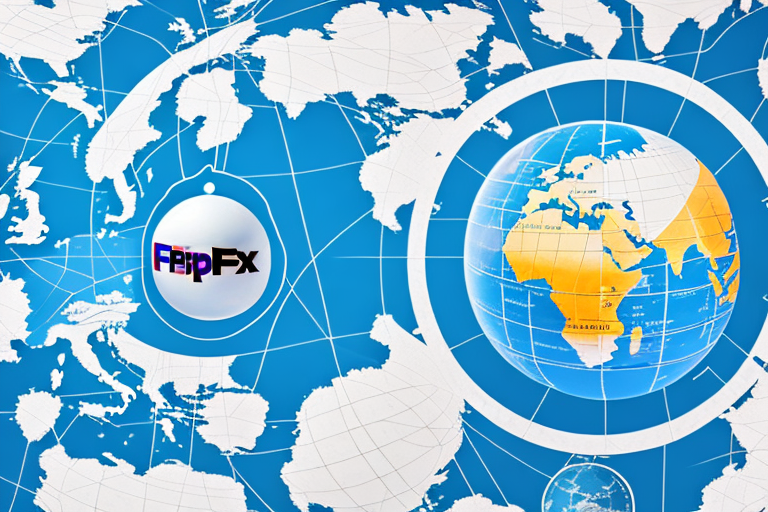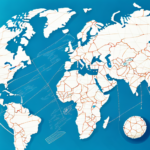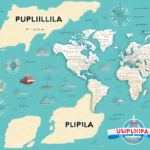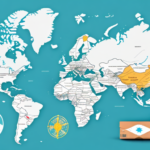Shipping to the Philippines has become a popular option for businesses and individuals alike. However, choosing the right shipping carrier can be challenging. In this article, we compare UPS and FedEx across various factors including shipping rates, pricing structures, transit times, tracking and insurance options, customer experience, and shipping restrictions to help you make an informed decision.
Factors to Consider When Shipping to the Philippines
Before selecting a shipping carrier, several critical factors must be evaluated to ensure a smooth shipping experience:
- Destination Address: The Philippines is divided into multiple provinces and regions, each potentially affecting shipping rates and delivery times. Shipping to remote areas may incur higher costs and longer transit times.
- Package Weight and Size: Heavier and larger packages typically cost more to ship. It's essential to accurately measure and weigh your package to determine the most cost-effective shipping option.
- Customs Regulations: The Philippines has specific customs regulations that prohibit or restrict certain items, such as firearms, drugs, and counterfeit goods. Always consult the Philippine Bureau of Customs and the carrier’s guidelines to ensure compliance.
- Declared Value: Accurately declaring the value of your shipment is crucial to avoid delays and additional taxes or duties.
Understanding the Shipping Process with UPS and FedEx
Both UPS and FedEx follow a multi-step shipping process involving pickup, sorting, transportation, and delivery. However, the specifics can vary based on the chosen shipping options:
Pickup and Sorting
Packages are first picked up from the sender’s location and then sorted at regional hubs based on the destination.
Transportation
The sorted packages are transported either domestically or internationally. UPS and FedEx have extensive global networks to facilitate efficient transportation.
Delivery
Finally, the package is delivered to the recipient's address. Both carriers offer various delivery options, including express and standard services.
Having access to detailed tracking information allows customers to monitor their shipments in real-time. Compare the shipping options and prices of both carriers to ensure an efficient and cost-effective shipping process.
Choosing the Best Shipping Option for Your Needs
Selecting the appropriate shipping option depends on several key factors:
Cost
Evaluate the shipping rates based on package weight, size, and destination. Different carriers may offer competitive pricing depending on these variables.
Delivery Speed
Consider how quickly you need your package to arrive. UPS and FedEx offer a range of delivery speeds from same-day to economy options.
Tracking and Insurance
Ensure the carrier provides comprehensive tracking and adequate insurance options to protect valuable or fragile items.
Carrier Reliability and Reputation
Research customer reviews and ratings to gauge the reliability and customer service quality of each carrier.
Additional Services
Look into additional features such as signature confirmation, package pickup options, and customs clearance assistance, which can add convenience and security to your shipment.
Comparing Pricing Structures Between UPS and FedEx
UPS and FedEx have distinct pricing structures that can affect your shipping costs:
UPS Pricing Structure
UPS calculates shipping rates based on a combination of weight, size, and destination. They offer various service options, including same-day, next-day, and standard delivery, which can influence the overall cost.
FedEx Pricing Structure
FedEx primarily uses package weight and destination to determine shipping rates. While their pricing structure is simpler, they may offer fewer expedited delivery options compared to UPS.
Choosing Based on Pricing
Consider both the pricing structure and the variety of delivery options each carrier provides. Depending on your specific needs, one carrier may offer a more advantageous rate or service level.
Evaluating Transit Times for Both Carriers
Transit times can significantly impact your decision when choosing between UPS and FedEx:
UPS Transit Times
UPS often provides faster delivery options, especially for international shipments. Express services can deliver packages within 1-3 business days depending on the destination.
FedEx Transit Times
FedEx offers reliable standard delivery times, typically ranging from 3-5 business days for international shipments. Their express services are also competitive but may not be as extensive as UPS.
Impact of Origin and Destination
The distance between the origin and destination, as well as the specific regions in the Philippines, can affect transit times. Urban areas like Manila may experience faster delivery compared to remote provinces.
Pickup and Cutoff Times
Both carriers have specific pickup and cutoff times that determine when a package will be processed and shipped the same day. Ensure your shipment timing aligns with these schedules to meet your delivery deadlines.
Availability of Tracking and Insurance Options with UPS and FedEx
Tracking and insurance are crucial for ensuring the safety and accountability of your shipments:
Tracking Options
Both UPS and FedEx offer comprehensive tracking systems that allow you to monitor your package’s journey in real-time. This provides peace of mind and the ability to address any issues promptly.
Insurance Options
Insurance protects against loss or damage during transit. UPS and FedEx offer various insurance levels based on the declared value of the shipment. It is essential to choose a level that adequately covers your package’s worth.
Additional Services
Both carriers provide supplementary services such as customs clearance assistance, delivery confirmation, and signature required options to enhance the security and reliability of your shipments.
Customer Experience and Support for Shipping to the Philippines
The quality of customer service can influence your overall shipping experience:
Customer Support Channels
UPS and FedEx offer multiple support channels, including phone support, online chat, and email. Evaluate the responsiveness and helpfulness of each carrier’s customer service.
Customer Reviews and Ratings
Researching customer reviews can provide insights into the reliability and efficiency of each carrier. Look for patterns in feedback related to delivery times, package handling, and customer support experiences.
Customs Documentation Guidance
Proper documentation is vital for smooth customs clearance. Both UPS and FedEx provide resources and support for preparing the necessary paperwork to avoid delays.
Shipping Restrictions and Customs Considerations When Shipping to the Philippines
Understanding shipping restrictions and customs requirements is essential to prevent any issues during transit:
Prohibited and Restricted Items
The Philippines prohibits shipping certain items, including firearms, drugs, and counterfeit goods. Always refer to the Philippine Bureau of Customs for a comprehensive list of prohibited and restricted items.
Customs Duties and Taxes
Items exceeding a specific value may incur customs duties and taxes. It is crucial to accurately declare the value of your shipment to avoid unexpected costs for the recipient.
Documentation Requirements
Properly filled out customs forms are necessary for the clearance of your packages. Both UPS and FedEx offer assistance in preparing these documents to ensure compliance with local regulations.
Delivery to Remote Areas
Shipping to less accessible regions in the Philippines may involve additional steps and longer transit times. Plan accordingly and choose a carrier that has experience with deliveries to these areas.
Tips for Saving Money on International Shipping Costs
International shipping can be costly, but the following strategies can help reduce expenses:
- Use Shipping Consolidators: These services combine multiple packages into a single shipment, often resulting in lower shipping rates.
- Compare Shipping Rates: Regularly compare rates between UPS, FedEx, and other carriers to identify the most cost-effective options.
- Opt for Flat Rate Boxes: Utilizing flat rate boxes can provide predictable shipping costs, especially for heavier items.
- Optimize Package Size and Weight: Reducing the size and weight of your packages can significantly decrease shipping costs.
- Negotiate Rates: If you have high shipping volumes, consider negotiating bulk rates with your chosen carrier for additional savings.
Additionally, ensure your packages are well-packaged to prevent damage, which can lead to returns or additional shipping fees. Clearly label packages with accurate addresses to avoid delays and misdeliveries.
Real-World Examples of Businesses That Have Saved Money by Switching Carriers
Many businesses have optimized their shipping costs by reevaluating their carrier choices:
Small Online Retailers
A small online shop switched from UPS to FedEx and reported savings of up to 30% on shipping costs. The change not only reduced expenses but also provided better tracking options for their customers.
Large Corporations
A large corporation compared shipping rates across multiple carriers and ultimately partnered with a shipping consolidator, resulting in savings of up to 50% on their international shipping expenses.
Local Bakeries and Artisans
A local bakery transitioned from using USPS to a regional carrier, achieving savings of approximately 20% on shipping costs. The regional carrier offered more competitive rates due to the bakery's high shipment volume.
Clothing Retailers
A clothing retailer moved from a national carrier to a local courier service, enabling same-day delivery within their city. This improvement not only enhanced customer satisfaction but also set the retailer apart from competitors.
The Future of International Shipping Trends in the Philippines
The landscape of international shipping to the Philippines is evolving, influenced by several key trends:
Growth of E-commerce
The rise of e-commerce continues to drive demand for reliable and efficient international shipping services. As more consumers turn to online shopping, carriers are expanding their services to meet increasing shipment volumes.
Infrastructure Improvements
The Philippine government is investing in the enhancement of ports and airports, which will boost the efficiency and capacity of international shipping. Improved infrastructure is expected to reduce transit times and increase the reliability of shipments.
Strategic Location
Located in Southeast Asia, the Philippines serves as a strategic hub for international shipping. Its proximity to major shipping routes enhances its role in global trade and commerce, attracting more international carriers to the region.
Technological Advancements
Advancements in tracking technology and logistics management are improving the shipping experience. Enhanced tracking systems provide better visibility, while automated processes streamline operations, leading to faster and more accurate deliveries.
Conclusion: Which Carrier is Best for Your Needs When Shipping to the Philippines?
Choosing the right shipping carrier for deliveries to the Philippines involves evaluating multiple factors, including cost, delivery speed, package size, tracking and insurance options, and customer support. Both UPS and FedEx offer reliable services with their unique strengths:
- UPS: Known for its extensive range of delivery options and faster transit times, making it ideal for time-sensitive shipments.
- FedEx: Offers competitive pricing and reliable standard delivery services, suitable for businesses looking to balance cost and efficiency.
Ultimately, the best carrier depends on your specific shipping needs and priorities. It is essential to compare the rates and services of both carriers, consider any additional features that may benefit your shipments, and consult customer reviews to make an informed decision. By carefully assessing these factors, you can select the shipping carrier that best aligns with your business requirements and budget.








